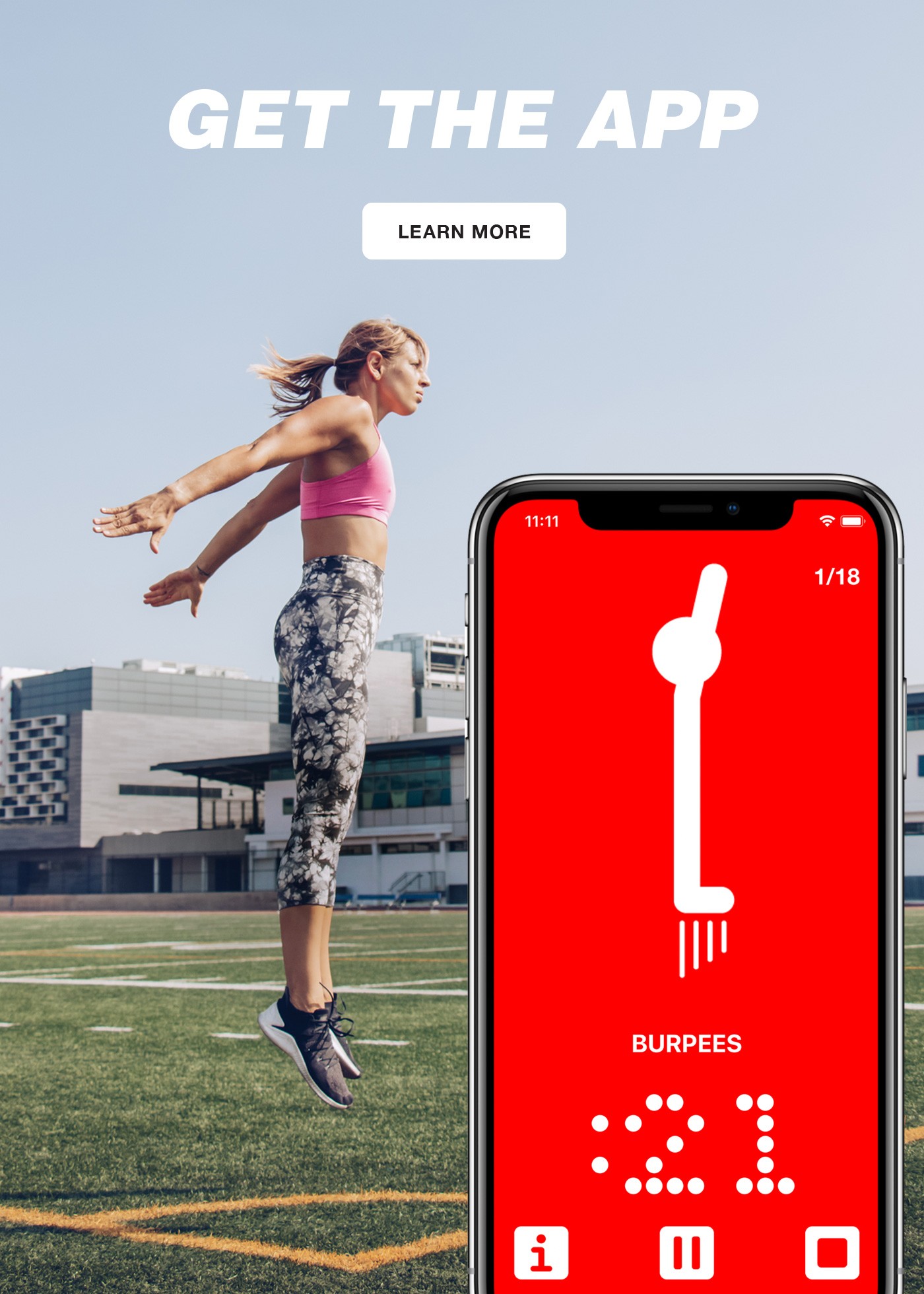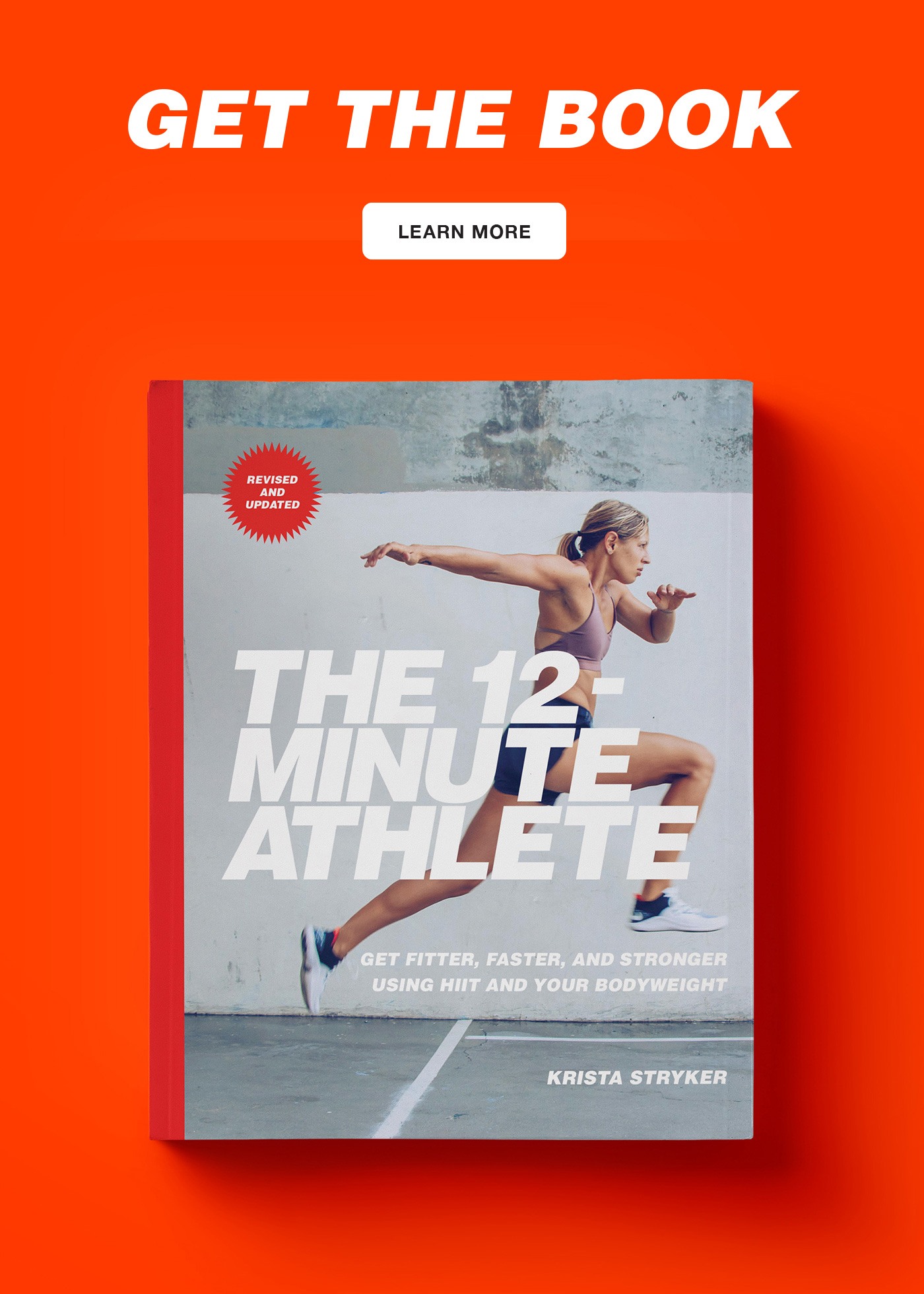You might have noticed recently how cardio has become an almost dreaded word in fitness industry and something that you should pretty much remove from your vocabulary altogether.
But is cardio actually bad for you?
People often associate the word cardio with long distance running. But they are not synonyms.
Grab a jump rope and do fifteen double unders. Do a hundred burpees. Do as many high knees as you can in 30 seconds.
You just did some cardio.
So, what exactly is cardio?
Cardiovascular Exercise (Or Simply, Cardio)
To put it simply: Cardiovascular or cardiorespiratory exercise is a type of exercise that gets your heart rate up, and as a result, improves your body’s oxygen consumption.
Getting back to running again, it’s pretty obvious that any kind of running is cardiovascular exercise, but not every cardiovascular exercise involves running (which is great, because I hate running).
Cardio comes in so many forms. If you are doing 12 Minute Athlete workouts, you are definitely doing cardio in nearly every single one of them, while most of those workouts don’t involve any running at all.
Even heavy weight lifting can be cardio, if you do it fast enough.
So Many Types of Cardio
Long distance running, bike riding, or working out on an elliptical machine are low intensity, long duration cardiovascular activities. But there are also high intensity, short duration cardiovascular exercises and cardio exercises that are done in intervals.
Let’s take a look at the different types…
Low Intensity, Long Duration Cardio Training
Let’s get this one out of the way first, because as mentioned, it’s the type of exercise that most people associate with the word cardio. Low intensity, long duration cardiovascular exercise lasts at least 40 minutes and it’s performed at relatively low intensity–about 40-60% of your maximum heart rate.
Slow running, brisk walking, cycling, rowing or swimming are the exercises that are usually performed within this heart rate range.
What is this type of cardio good for: This type of cardio training is good for people who are just starting their fitness journey and may not be ready for higher intensity workouts. But it’s also great for more advanced athletes during their active recovery days.
What it’s not great for: Even though you see people running outside or on a treadmill for hours in hopes of losing body fat, too long low intensity cardio training is actually not the best tool for that. Interval and strength training are way smarter ways to go, if you want to lose fat.
It’s also been shown that low intensity, long duration cardio training produces more cortisol, which is also known as stress hormone. After one hour of exercise, the cortisol levels have shown to go up, especially in beginners. But elevation is not that noticeable in experienced athletes who are adapted to that type of training.
High Intensity, Short Duration Cardio Training
During this type of cardiovascular exercise, your heart is beating at around 80 to 85% of its maximum capacity. This is very high intensity training during which you don’t take breaks but you keep going as hard as you possibly can. For example, doing 100 burpees in a row without resting is high intensity, short duration cardiovascular training.
This type of exercise lasts from just a few minutes up to around 20 minutes. If you are working really hard, going longer than 20 minutes is going to be really difficult. Can you imagine doing high knees for 20 minutes, without taking breaks?
Yeah, me either. After a short period of time, you’re going to slow down a lot and it will no longer be a high intensity activity.
Also, working out on that high intensity for too long is not healthy. It’s very taxing for your heart, your muscles will fatigue quickly and you’ll end up compromising your technique. But good form is always top priority.
What is this type of cardio good for: Short and intense cardio is a great fat burner. It’s also way to go if you don’t have much time but you want to burn a lot of energy, because high intensity cardio training comes with a fun side effect: afterburn.
Who wouldn’t love to burn fat while lying on the couch! But to start the afterburn effect, you’ll first need to workout hard.
What it’s not great for: If you’re very new to fitness, you shouldn’t workout at really high intensity more than 2-3 times a week. It’s taxing on your body, so you may get injured and suffer from fatigue. Be sure to build up some cardio endurance with low intensity, low endurance cardio training first.
High Intensity Interval Training (HIIT)
Most of the 12 Minute Athlete Workouts are high intensity interval training (HIIT) workouts. Your heart is working hard, beating at a capacity of 85-100% of its maximum capacity.
During high intensity interval training, you’re working as hard as you can for a certain period of time, then resting for short period of time.
Duration of the work and rest periods can vary. Most of the 12 Minute Athlete workouts are built like this: 30 seconds work, 10 second rest, or 50 seconds work, 10 seconds rest. But two minutes hard work and 30 seconds rest is high intensity interval training as well.
What is this type of cardio good for: Similar to high intensity, short duration training, HIIT is better tool for fat loss than low intensity, long duration cardio (a.k.a. doing elliptical workout for an hour). Also HIIT has a great afterburn effect.
You seriously need just 10 to 15 minutes for a killer workout.
What it’s not great for: People who are overweight, are new to fitness or haven’t trained in a long time, have to be careful with incorporating extremely intense HIIT workouts into their routine. Take it easier in the beginning—there’s no need to do HIIT 5 days a week, or you take the risk of injuring yourself or overtraining.
Cardio Isn’t Bad For You!
It’s shortsighted to say that all cardio is bad for you. If it was, we wouldn’t do 12 Minute Athlete workouts here!
Cardiovascular exercise actually has many benefits:
It Improves Your Heart Health
Your heart is a muscle, so to make it stronger, you have to train it similarly to how you train other muscles in your body. That happens by working out and getting your heart rate up.
You can take simple steps every day to strengthen your heart. Walk places, take the stairs, run your errands riding your bike, etc.
It all makes your heart stronger.
…and of course, work out!
It Boosts Your Metabolism
Elevating your heart rate also speeds up your metabolism, which is the rate at which your body burns energy. Cardiovascular training makes your metabolism faster. Faster metabolism equals faster fat loss.
HIIT is an especially great way to boost metabolism. The more intense the training, the more you increase your metabolic rate and the greater the afterburn.
It Releases Happy Hormones
Cardiovascular exercise helps to produce so-called feel-good hormones. Endorphins are a real thing! Exercising helps to relieve stress and depression.
For some people, there’s nothing more meditative than a long run. Others prefer to give it all to a short high intensity workouts.
They are different types of cardiovascular workouts, but they both can help you to feel better and happier. I don’t know anyone who finishes a workout feeling more stressed than when starting it.
But I do know many people who get more stressed because they skipped their workout.
It Helps You in Your Favorite Sport
Whether your sport of choice is Ultimate Frisbee, meeting up for a game of basketball with friends on the weekends, boxing, or even gymnastics, building up your cardio endurance is crucial to helping you excel at your sport.
Because when you’re not huffing and puffing for air, you can focus on building the skills you want for your specific sport or activity.
Get Your Cardio On!
Cardio isn’t bad for you. Our bodies need cardio exercise—we are designed to move, to work hard, to sweat.
The reason why cardio has been getting a bad rap lately is that a lot of people tend to think that cardio all about running on a treadmill for hours. And we all know by now that you don’t need to run for hours or do super long endurance training to get in shape.
That’s why the types of cardio we mostly focus here on 12 Minute Athlete are high intensity, short duration, and high intensity interval cardio. Not only are they great for conditioning your heart, boosting metabolism and through that, burning fat, they’ll help you exceed at your favorite sport.
And those extra endorphins won’t hurt either.



If I do 4 workouts a week (I tend to do the 16 mins) and 2 5k runs as I like to keep my running hand in. How long would it take to see results? I am not new to exercise but still chasing that lean athletic look I desire!!
Hi Charlene,
seeing results depends on so many factors – your weight, height, lifestyle (including diet, sleep, stress level…) so unfortunately there’s no one and only answer how long it takes to get lean. But it looks like you’re on the right path with HIITs and running. It would be great to add some stretching in the mix as well.
Thanks for coming back to me! I have no weight to lose, well maybe 3/4 lbs. its more about definition and building muscle. I eat clean 70/80% of the time. So hopefully with the 4 and 2 runs I should see results?
Hi Charlene, believe me, this 3/4 lbs doesn’t really matter all that much! I think you’re on the right way with combining strength /HIIT and running. 🙂
Hey Kersten.
Just wanted to drop you a thanks. You’re articles are always informative. I am a 55 year old active woman. Done lots of running ( which to be frank, I don’t really love)! Also do cycling outdoors and spinning indoors. Just recently, (not that old chestnut – I hear you say)!! I have not found time or inclination fir exercise. Perhaps compounded by having a ski ‘incident’ where I have done some MCL damage. Nonetheless your article today has cheered me up no end. As I write, its Sat pm 13.16 and I am in bed with some horrid virus which has robbed me of every ounce of energy. I know I will be ok in a few days, but just reading your article as I said has really cheered me up. I will be doing a 26.2 mile charity walk in London next month, and just before I read your piece, I thought that might as well be me saying I’m jogging to another planet – it seemed so far away! So once again a HUGE thanks for giving a ‘sorry for herself’ individual the chance to feel that “this will pass and I’ll be back on the road again. Sylvia. Xx
Hey Sylvia! Thanks for your kind words!
Sorry to hear about you being sick right now 🙁 But that will pass too! So much matters about our mindset. If your mind is strong, your body comes out from being sick or injured faster as well.
I think you should really exercise the way you love. There are so many things out there to try, you don’t need to run if that’s not your thing 🙂
Get well soon!